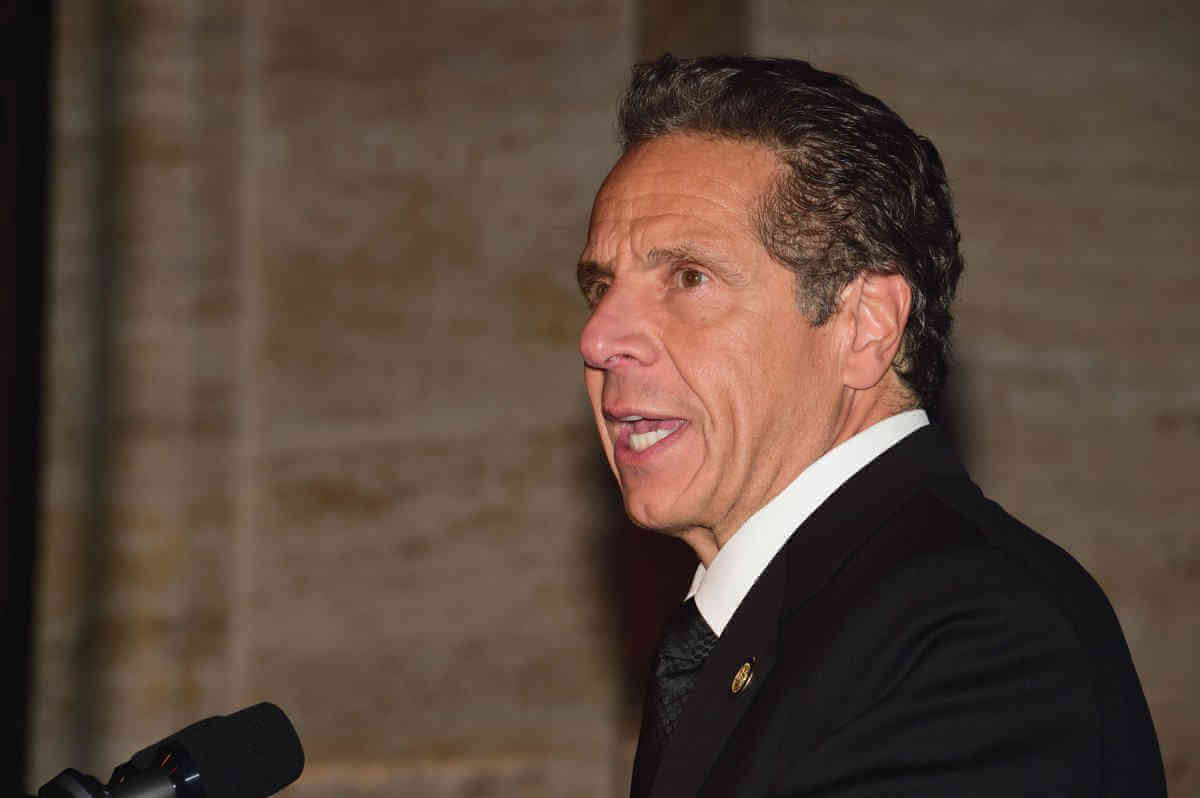In a recent story in The New York Times, Governor Andrew Cuomo was quoted declaring victory in an ambitious plan that would reduce the number of new HIV infections annually in New York to the point where the HIV epidemic in the state would be over.
“Five years ago we launched an aggressive, nation-leading campaign to end the AIDS epidemic in New York and to ensure every person living with HIV or AIDS gets the support they need to lead a full and healthy life,” Cuomo said in a statement issued on October 3, the day the Times story was published. “This new data shows we are on track to meet that goal and continue our historic progress to finally bend the curve on an epidemic that has taken too many lives for too long.”
Buried in the story was the sentence “State health officials say they believe they are on track to lower the number of new HIV diagnoses to a little more than 1,500 per year by 2020.”
Huh?
The Plan to End AIDS was announced in 2014. Since then, the state and city health departments and a host of HIV groups have developed a number of metrics that are being used to assess the plan’s progress and will be used to measure its success. Chief among them was that new HIV infections will be reduced to 750 annually by 2020.
It appeared that the Cuomo administration was moving to a new measure of success.
Not so, said Johanne Morne, the director of the state AIDS Institute, a unit of the state health department.
“We will have the evidence to show our success by 2021,” Morne told Gay City News, adding that 750 new HIV infections annually remains a goal of the plan.
There were just a few skeptics who doubted the plan in 2014. Over time, skepticism has become a little easier.
Every year the city and state health departments produce reports that show how many new HIV diagnoses were made in the prior year and they detail the demographics of the newly diagnosed population.
In the Times story, the state reported that there were 2,481 new HIV diagnoses in 2018. Under the plan, the target for 2020 is 1,515 new HIV diagnoses. That would be a 39 percent decline over two years. From 2014 through 2018, the state reported declines in new HIV diagnoses that ranged from a low of three percent to a high of nine percent. The average decline was four percent.
“I can tell you in New York State, we’ve never seen a decrease like that,” Morne said. “Maybe we will be the first in the nation to see a significant decline on an annual basis.”
New HIV infections — as distinguished from those infections newly diagnosed — can only be estimated. Those estimates are produced annually using a methodology that is effectively imposed on state and local health departments by the federal Centers for Disease Control and Prevention (CDC).
Using one method from 2014 to 2016, the state saw eight percent declines year over year in estimated new HIV infections. The state saw a 17 percent decline from 2016 over 2017, but it also used a new method to estimate new infections in 2017. Whatever method is used in 2020, the state is asserting that estimated new HIV infections will fall from 2,269 in 2017 to 750 in 2020, a 67 percent decline. The state has not yet estimated the number of new HIV infections that occurred in 2018.
The Plan to End AIDS set annual targets for new HIV infections and then compared those to the new infections estimated to have occurred. The difference is getting smaller.
“So the gap is closing, and this is a favorable trend,” David Holtgrave, the dean of the School of Public Health at the University of Albany, which is part of the SUNY system, wrote in an email. “We will have to wait for the 2020 end-of-year data to see if that gap closes entirely, but it is moving in the right direction.”
What will also change in 2020, state health officials say, is the proportion of estimated new HIV infections to those infections newly diagnosed. From 2014 through 2016, the estimated new HIV infections accounted for 97 percent to 95 percent of the new diagnoses. In 2017, using the new method to estimate new infections, 82 percent of the people who were newly diagnosed were counted as newly infected. In 2020, only half of the newly diagnosed people are projected to be newly infected.
“While these two constructs tend to correlate and move in the same direction, they do not always do so depending on the particular circumstances of the local epidemic in a given time period,” Holtgrave wrote. “I don’t believe we can say with certainty that 1,500 new HIV diagnoses in 2020 necessarily means that there will be more than 750 new HIV infections in the same year. That may or may not ultimately be the case, but we will need the data to find out.”
Cuomo’s statement prompted Gay City News to seek clarification from the state health department. A first interview occurred on October 7, but the newspaper was told at the start that it was “on background.” The interview was ended abruptly after 20 minutes and Gay City News asked if some material could be used on the record. The newspaper sent quotes that it proposed to use. The newspaper was then offered an on-the-record interview with Morne on October 8.
The city health department did not respond to a request for comment.



































